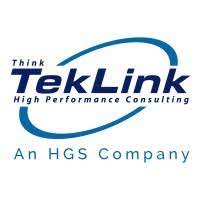SAP Analytics
Filter By
Browse By
- SAP Analytics and AI
- SAP Application Development and Integration
- All SAP Application Development and Integration
- SAP ABAP
- SAP ABAP Development Tools
- SAP ABAP Test Cockpit
- SAP API Management
- SAP BAPI
- SAP Basis
- SAP BRF
- SAP Business Application Studio
- SAP CMS
- SAP Design Studio
- SAP Development Tools
- SAP DevOps
- SAP EAI
- SAP EDI
- SAP Extension Suite
- SAP Fiori
- SAP Fiori Elements
- SAP Integration Suite
- SAP Low Code Application Development
- SAP Low Code Automation
- SAP Netweaver
- SAP Release Management
- SAP UI5
- SAP Web Application Server
- SAP Web IDE
- SAP Business Process Management
- SAP Center of Excellence
- SAP CIO
- SAP Customer Experience
- SAP Data and Data Management
- All SAP Data and Data Management
- SAP BW
- SAP BW/4HANA
- SAP Crystal Reporting
- SAP Data Archiving
- SAP Data Center
- SAP Data Governance
- SAP Data Integration
- SAP Data Migration
- SAP Data Quality
- SAP Data Services
- SAP Data Strategy
- SAP Data Visualization
- SAP Data Warehouse Cloud
- SAP DMS
- SAP Document Control
- SAP EIM
- SAP ETL
- SAP ETL Tools
- SAP HANA
- SAP HANA Administration
- SAP HANA Deployment Infrastructure
- SAP HANA Studio
- SAP Master Data
- SAP Master Data Governance
- SAP MDM
- SAP Enterprise Architect
- SAP Enterprise Asset Management
- SAP ERP
- SAP Finance
- All SAP Finance
- SAP Accounting
- SAP AR AP
- SAP Asset Accounting
- SAP Billing Systems
- SAP BPC
- SAP BRIM
- SAP Cash Management
- SAP Central Finance
- SAP Controlling
- SAP COPA
- SAP Cost Center Accounting
- SAP e-invoicing
- SAP FICO
- SAP Finance Automation
- SAP Financial Closing Cockpit
- SAP Financial Consolidation
- SAP Financial Planning
- SAP FX Risk
- SAP General Ledger
- SAP Global Tax Management
- SAP Hyperion
- SAP Order to Cash
- SAP Payment Processing
- SAP Profitability Analysis
- SAP Rebate Management
- SAP S/4HANA Finance
- SAP Universal Journal
- SAP Governance Risk and Compliance
- SAP Human Capital Management
- SAP Intelligent Technologies
- SAP Platform and Technology
- All SAP Platform and Technology
- SAP Business Technology Platform
- SAP Cloud Connector
- SAP Cloud Integration Platform
- SAP Cloud Migration
- SAP Cloud Platform
- SAP Cloud Providers
- SAP Cloud Strategy
- SAP Container Platform
- SAP Digital Asset Management
- SAP Digital Integration Hub
- SAP Digital Signature
- SAP HANA Enterprise Cloud
- SAP HEC
- SAP Hyperscalers
- SAP Infrastructure
- SAP Messaging
- SAP Smart Forms
- SAP Quality and Testing
- SAP Security
- SAP Spend Management
- SAP Supply Chain Management
- All SAP Supply Chain Management
- SAP APO
- SAP Asset Management
- SAP Business Network
- SAP Digital Manufacturing Cloud
- SAP Digital Twin
- SAP EWM
- SAP IBP
- SAP Inventory Management
- SAP Label Printing
- SAP Logistics
- SAP Manufacturing
- SAP Manufacturing Automation
- SAP MES
- SAP MII
- SAP MM
- SAP MRO
- SAP MRP
- SAP Order Management
- SAP Plant Maintenance
- SAP PLM
- SAP Production Planning
- SAP S&OP
- SAP SD
- SAP SPM
- SAP Supply Chain Planning
- SAP Track and Trace
- SAP Transportation Management
- SAP System Administration
Analytics pertains to leveraging data generated and captured across the organization to generate insights that can help transform the way organizations run. Analytics can also help build capabilities that can automate many aspects of day-to-day decision making that is currently performed manually. There are three main categories of analytics leveraged in organizations today:
Business Intelligence (BI)
Analytics pertains to leveraging data generated and captured across the organization to generate insights that can help transform the way organizations run. Analytics can also help build capabilities that can automate many aspects of day-to-day decision making that is currently performed manually. There are three main categories of analytics leveraged in organizations today:
Business Intelligence (BI)
The end-to-end process of BI involves analyzing the data generated by businesses, transforming the data into insights, and leveraging those insights to make optimal decisions. BI tools primarily leverage “descriptive analytics,” because these tools traditionally focus on analyzing current and historical performance based on data generated by the enterprise.
Machine Learning
Machine learning (ML) is a subset of artificial intelligence (AI) algorithms. The differentiating aspect of these algorithms is that they can learn from the input data and modify the model based on changes in that data. It is this “learning” aspect that makes these algorithms powerful.
Artificial Intelligence
In simple terms, Artificial Intelligence (AI) refers to systems or solutions that can replicate human decision-making capabilities. These solutions often leverage a combination of software and hardware to mimic human capabilities like problem -solving and decision making
Key Considerations for SAPinsiders
SAP applications leverage AI and ML algorithms extensively to either embed innovative capabilities within their solutions, help end-users perform advanced analytics with minimal technical proficiency, or allow data scientists and ML engineers to build advanced ML models and solutions. SAP HANA has been designed to be easily leveraged as a scalable ML platform. A powerful tool built into SAP HANA is the Predictive Analytics Library (PAL).
SAP Data Intelligence has a rich ML content library. Like most best-of-breed analytics tools, SAP Analytics Cloud provides users the ability to leverage advanced Machine Learning (ML) algorithms. While ML algorithms have many applications, predictive analytics remains a key one.
On the business processes side, SAP AI offerings promise to infuse transformative intelligence to all key business processes areas like lead to cash, design to operate, source to pay and recruit to retire. AI algorithms help include innovative features across all these processes.
87 results
-

- SAP Analytics
 Premium
Premium
How analytics changes with SAP S/4HANA and impact to modern data platform
As you transform your business with SAP S/4HANA, the way analytics are handled is going to change. SAP S/4HANA opens insights like never before. A new approach to a modern data platform adds significant value and provides the opportunity to unlock the potential of a SAP S/4HANA transformation. Attend this comprehensive session to: -Learn how…
-

Using Financial Analytics to Unlock Data Insights
May 26, 2021
Attend this fireside chat with top experts who will discuss practical strategies for integrating SAP data with modern analytics to accelerate business insights for finance professionals. As a finance team, you want to become the most strategic partner to your organization’s lines of business. But are you tired of waiting for never-ending processes to gather and…
-

- SAP Analytics
 Premium
Premium
Leveraging Machine Learning for Demand Forecasting
Reading time: 4 mins
Until recently, conventional time series forecasting methods have been predominantly used for forecasting in demand planning. A majority of demand forecasting tools in the market leverage these methods in their solutions. With advances in technology and computing power, the sophistication of these time series algorithms has increased thereby increasing forecast accuracy. However, with the advent…
-
-

- SAP Analytics
 Premium
Premium
A quick comparison of SAP S/4HANA Cloud, SAP Analytics Cloud, and SAP Data Intelligence
The goal of the presentation is to explore the latest updates related to SAP cloud technologies (SAP Analytics Cloud, SAP Data Intelligence, and SAP S/4HANA Cloud), and as a useful guide to companies to choose when each of these technologies is applicable to them depending on their key processes they want to involve in the…
-

The Role of Analytics in Business Process Intelligence: A RISE with SAP Perspective
Reading time: 6 mins
Increasingly, businesses are shifting their focus to accommodate the new digital reality. Technology is a key enabler in this aim, but businesses also need to consider what needs to change within their enterprises, including their processes and organizational design. Business transformation has become the front-and-center strategic priority that helps organizations adapt to the digital world…
-

- SAP Analytics
 Premium
Premium
Enterprise Artificial Intelligence – Embedded AI
Reading time: 9 mins
If your company has not begun building an artificial intelligence (AI) strategy, it may risk falling behind competitors. That could mean lagging in areas of innovation that AI can enable, including improved or new products, reduced risks, and a better bottom line. There is good news for SAP customers: SAP has already begun embedding AI…
-

- SAP Analytics
 Premium
Premium
Enterprise Data and Analytics State of the Market Benchmark Report
Reading time: 1 mins
Organizations in today’s digital age face a set of challenges that they have never experienced before. As commoditization of technology continuously lowers barriers to entry across industries, incumbents are being disrupted by players that are smaller, nimble, and agile. New business models, products and services are being launched on a daily basis by new entrants,…...…
-
-

The journey from Strategy to an Analytics Algorithm : A Marketing Analytics example
Reading time: 1 mins
Every Analytics algorithm that you use in your teams should tie to your Corporate strategy goals. However, very few resources currently clearly highlight how. Closing this link, in my mind, is one of the ingredients to the secret sauce to developing analytical products that will work, in a sustainable way (not a blip that goes…
-

Maximize Your Investment in SAP and Azure Synapse to Create a Cost-Effective Data Analytics Strategy
February 01, 2021
Businesses across the globe are struggling as they attempt to wrangle multiple data sources into a cohesive data analytics strategy. Bringing together SAP and non-SAP data is complex and requires significant technical resources. In this session, learn from experts about how you can leverage IBM to help you bring this data together in a data fabric that maximizes your investment in SAP combined with Azure Synapse creating a cost-effective data analytics strategy and…
-

Impact on Analytics and Visibility
Reading time: 3 mins
SAP S/4HANA, for many organizations, is the single sources of truth for finance and business functions. As organizations conduct their SAP S/4HANA transition projects, they are consolidating data from multiple systems across the enterprise. This has an impact on the business capabilities of making critical decisions, conducting analysis, and understanding the direction of the business…
Featured Insiders
-

Ken Coleman
American Red Cross, Business Intelligence Manager
-

Ingo Hilgefort
Senior Director at SAP
-

Aric Quinones
Managing Director, Protiviti
Become a Member
Unlimited access to thousands of resources for SAP-specific expertise that can only be found here.
Upcoming Events
-

Register Now: SAPinsider Technovation Summit Barcelona: AI + SAP BTP
May 14 - 15, 2024
Barcelona, Spain
View Event
Related Vendors
Your request has been successfully sent

